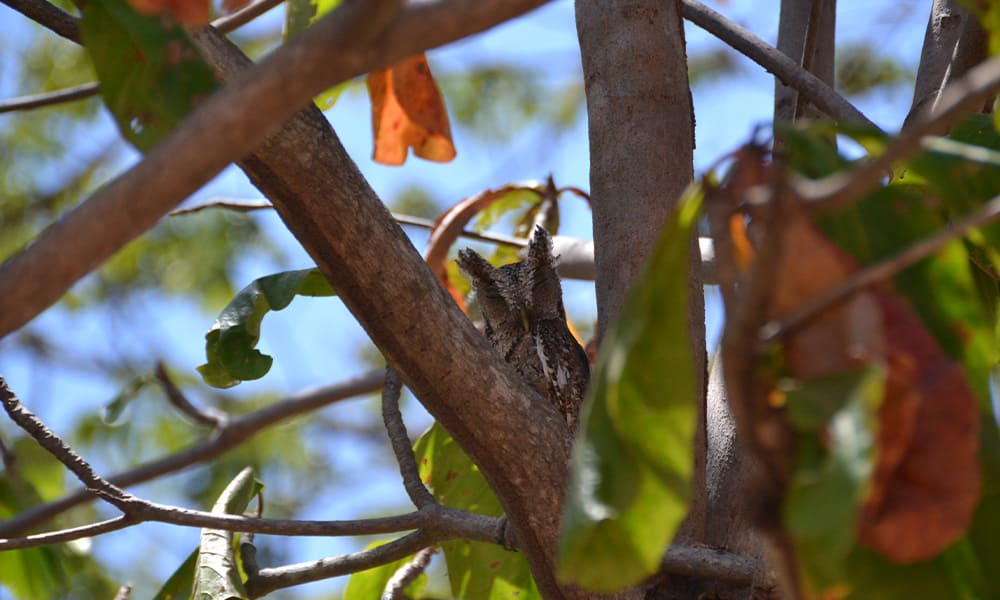What bird is both adorable and at the same time usually has a ‘I hate you so much I’m going to destroy you’ expression on its face? Let’s meet the pacific screech owl.
The pacific screech owl (Megascops cooperi), or Sorococa in Spanish, is one of four types of screech owl that call Costa Rica home. They all look very similar – stern, little, brown, gray and white owls. What sets the pacific screech owl apart is its specific color pattern and the fact that it is mostly found on the Pacific side of the country in Guanacaste.
Owls have always fascinated me. They’re mysterious because they generally only come out at night. They sound cool – hooting somewhere in the depths of the dark forest. But what I really love about owls is how grumpy they look. Their large eyes, designed for spotting prey in the darkness, are often accompanied by a feather pattern that makes them appear to have furrowed eyebrows.
This is definitely the case with the pacific screech owl. Go ahead and do an image search. Every single photo shows an owl that appears absolutely furious that it’s being photographed. I love it.
Pacific screech owls are crepuscular and nocturnal. This means that most of their activity is done at twilight and in the dark of night. During the day, they hide out in tangles of vines or holes in trees.
When the light of day begins to fade, they emerge and start looking for something to eat. The literature says they mostly focus on large insects including beetles, katydids, moths and scorpions but sometimes eat small vertebrates like birds or squirrels. You can add frogs and snakes to the list, because I’ve recorded this species turning them into owl food with my camera traps.
Pacific screech owls are one of the few owl species that I have a lot of firsthand experience with. For one reason or another, they were a common animal delivered to the rehabilitation and release center where I used to work. Several times over the years, we would receive a cardboard box with a few fluffy puffballs of baby owls in the bottom. Because it was such a frequent occurrence, I became quite good at raising them to the point that they were able to be released. I would start out hand feeding them with long tweezers several times per day completely covered in camouflage.
Once they had adult plumage, they were transferred into a flight cage with visual barriers so that they could never see me interacting with them. Once they proved that they could hunt on their own (I would place a ton of big grasshoppers in the cage and leave a camera trap to record them hunting.), they were released. They would make it through the entire process without ever seeing my face as to avoid them adapting to human interaction.
I record pacific screech owls pretty regularly with camera traps in Guanacaste. I have recorded them with cameras placed in trees but the easiest way to get an owl video is to have a camera over a puddle of water during dry season. Like many other animals, they frequent these puddles to bathe, hunt and drink. Take look at the video below and meet the pacific screech owl.
About the AuthorVincent Losasso, founder of Guanacaste Wildlife Monitoring, is a biologist who works with camera traps throughout Costa Rica. Learn more about his projects on facebook or instagram. You can also email him at: vincent@guanacastewildlifemonitoring.com

